I’ll start by writing this: the future of horticulture is in good hands. Here’s why I feel this way.
It started last spring at a Colorado State University Trial Gardens Advisory Committee Meeting. We had just finished the meeting and a group of us started a conversation about the labor shortage and its effect on our industry. My biggest concerns were, and still are, finding enough people to help maintain the 40-plus acres of existing landscapes as well installing and maintaining the annual beds at Water World every spring. The massive splash of color we provide for our guests every year is a huge focal point in these award-winning beds. They are a long-standing tradition at Water World!
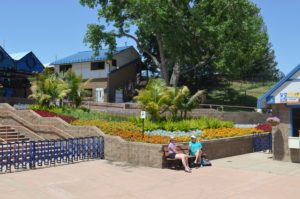
About Water World gardens
I was surprised to learn that many people didn’t know how big and beautiful our gardens and landscape are here at Water World. The beds are substantial, needing a few weeks to get them planted. Then we have the weeding, fertilizing and pruning throughout the season.
These beds provide our guests with islands of interest and areas for temporary refuge and for meeting with others. Guests can enjoy the plants, flowers, fragrance, hummingbirds and butterflies whether waiting in a queue for a ride, walking from ride to ride or enjoying a snack or lunch. For those folks who are playing chaperone for their kids or grandkids, garden areas may serve as a home base where the kids can check in, or as a spot to sit on a lawn chair under a tree in some shade with a good book—print book or e-book will do! Or you can catch some sun. Whatever guests do at Water World, they will be surrounded by a beautiful landscape.
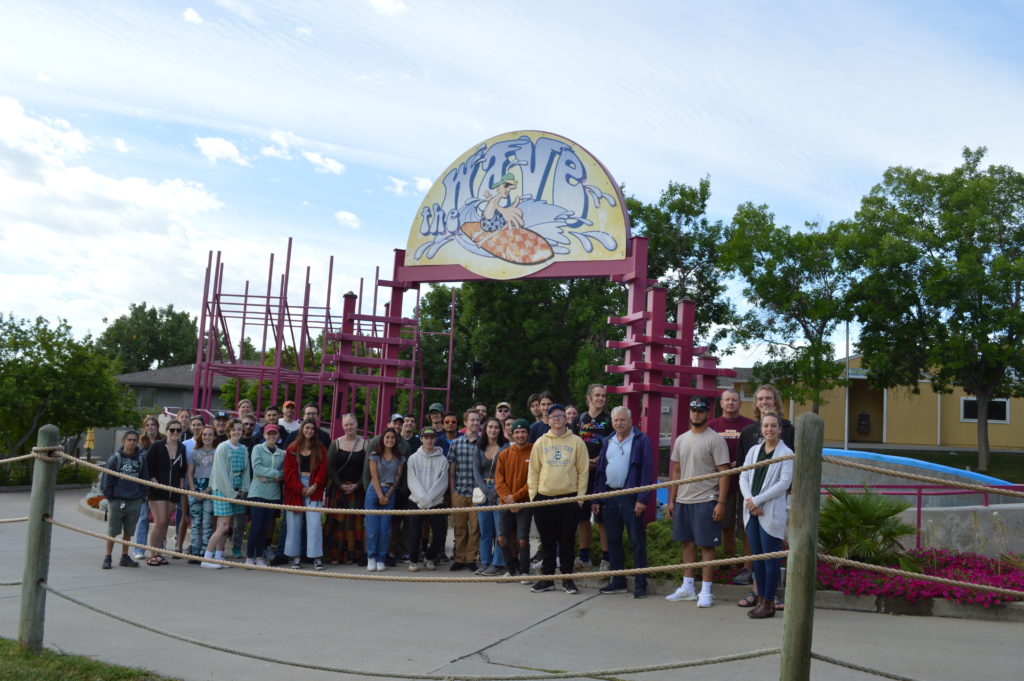
Arranging a CSU student tour
Then the conversation turned to giving tours. I have given tours to municipalities, growers, summer camps and school groups in the past. So, when Dr. Klett [professor and landscape horticulturist at CSU] asked if he could bring his Herbaceous Plant class for a tour, I was happy to oblige. We set the tour date for the Monday following Labor Day when Water World was closed for the season and the gardens still looked great.
Dr. Klett visited a few weeks before the tour so we could look at the gardens and discuss what he would like the students to see and learn. This was his first visit inside the water park. He was impressed with what we do here with our beds—the annuals mixed with tropicals and the perennial beds with a wide array of Plant Select® plants. Over the last few years, I have been changing quite a few of our small- to medium-sized flower beds over to more xeric and native type plant material.
After a short tour Dr. Klett chose three different areas to focus on. The first was at the main entrance. This is the first garden that guests walk by as they enter. The Turnstile and Alligator beds are my personal favorite. This year it was filled with bidens, verbena, cleome, dusty miller, petchoas, browallia, royal palm trees and foxtail asparagus ferns. The second area was just inside the park at Wally World, an area for toddlers and younger children. It has tropicals, topiaries and a row of annuals in containers. The last area Dr. Klett chose was the gardens around the Wave. This area was filled with European fan palms, petchoas, scented geraniums, bidens and verbena.
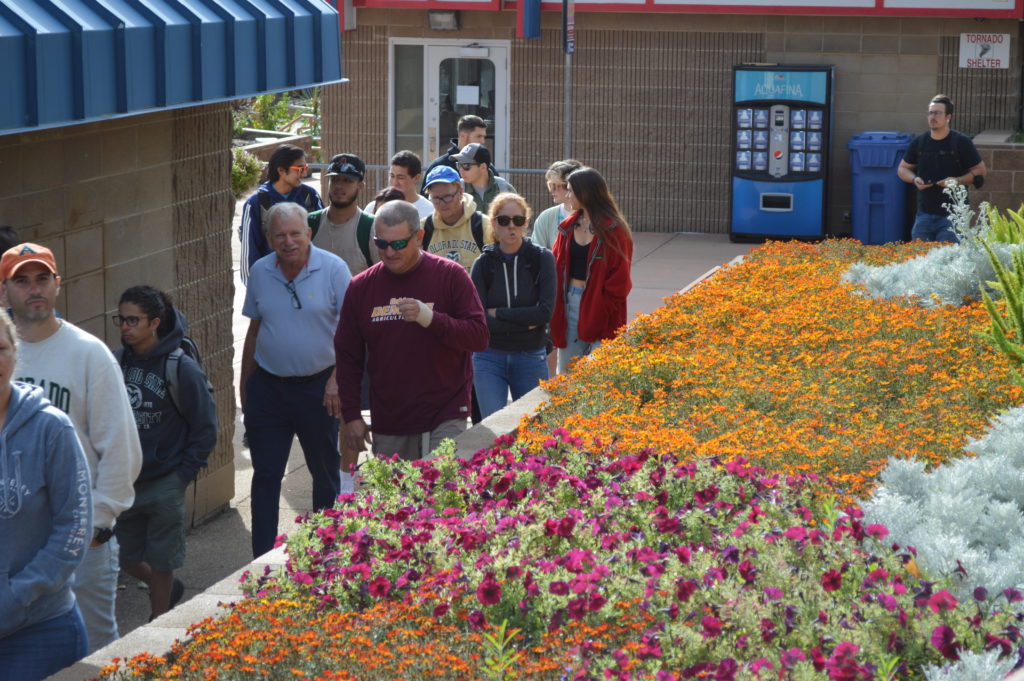
We then discussed what I was going to talk about:
- How do I decide which plants I use and how I design the beds?
- Where do I get the plants from?
- What do we fertilize with and when?
- What about general care and maintenance?
- What, how and when do we irrigate?
- How do we deal with insect and disease problems?

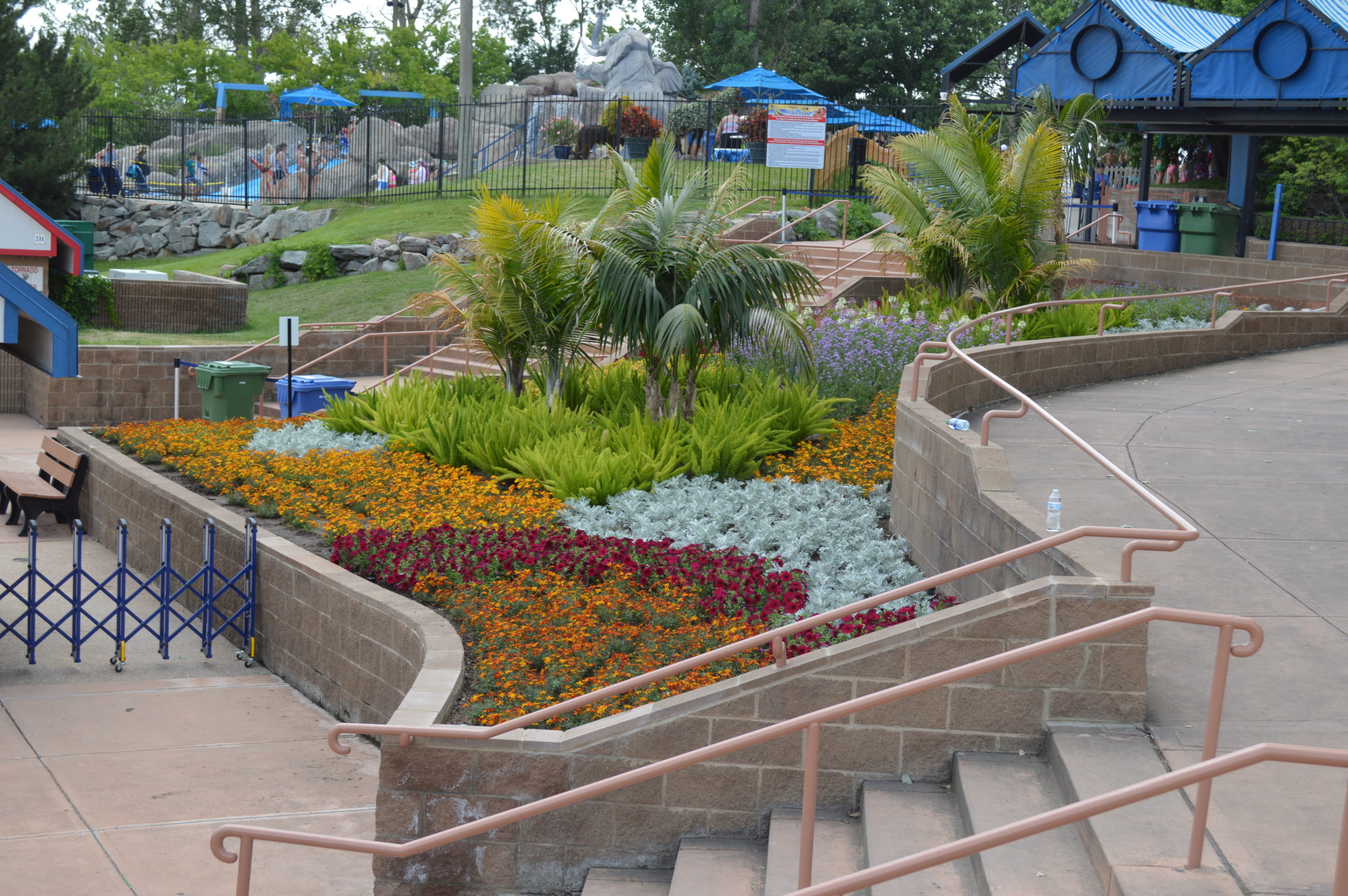
Next-gen horticulturists
On the morning of the tour, I met Dr. Klett and his 40 students near the main entrance. I started the tour with the design aspects and plant choices, then moved on to the items we discussed weeks before. I had also prepared a few questions for the students. I then opened the floor up to their questions.
I was asked so many insightful questions. How are you able to keep the palm trees looking so good in our high plains desert climate without humidity? What do you use for insect and disease control when you’re open seven days a week and need to avoid affecting the guests, and water quality in the pools and rides? How do you quantify the use of pollinator plants when so many people are allergic to bee stings?
I in turn asked questions like, what can you use to control petunia budworm organically? Does anyone know what a NODE is? The young woman who answered that question threw me off with her answer. It’s where a bud, leaf, twig or branch is attached. The right answer to a question I didn’t ask. I learned that a better-worded, more thorough question on my part would have been better. We had been talking about irrigation and I meant the NODE irrigation controller. She answered my question so quickly and with confidence!
We talked about why I place certain plants in high traffic areas and how I utilize plants for pollinators. I explained how I use certain plants strategically, like scented plants such as Atyr Essence of Rose geranium and prostrate rosemary, in areas where people congregate or gather. When people brush up against the foliage or flowers, those scents permeate the area. They say music calms the savage beast. Flowers and plants will do just fine. I talked about what I have learned including which plants have tolerated reclaimed water over the years, what plants can tolerate sunscreen overspray and plants that the ground squirrels won’t destroy. (They love to eat petchoa and calibrachoa flowers). Students also asked me how much of the plant material I propagate myself and how I propagate.
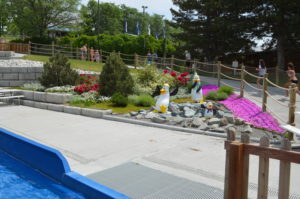
I was thoroughly impressed with these students. To be honest, I didn’t know what to expect from a group of students who just took a one-and-a-half-hour bus ride first thing Monday morning at the beginning of the school year just to listen to someone talk about plants and landscaping. Dr. Klett had told me this class would be designing their own beds in and around Fort Collins and the tours he was taking them on would be very helpful in that regard. It is my hope that they walked away with some ah-ha moments, ideas and knowledge they will use when working their designs. I will say it again—the future of horticulture is in good hands!










